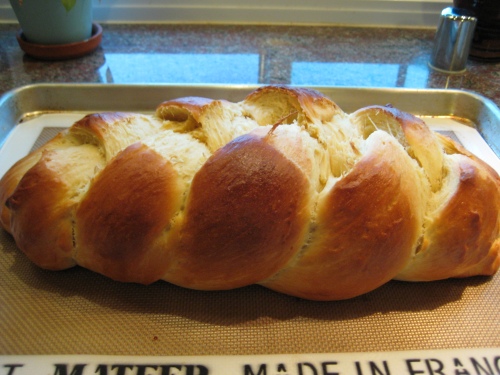
mmm... matzo ball soup
My dear friend, Krista, recently shared with me that she is battling brain cancer. After going through a wave of emotions and expressing appropriate concern, my first instinct was to make her matzo ball ball soup. While what she is dealing with is way beyond the rumored healing powers of Jewish Penicillin, and since I have no training in oncology, it seemed an appropriate way to to provide a small amount of caring and comfort while she recovers from her surgery. Also the incessant rain called for something warming and cozy. She also requested my matzo candy, and a brain tumor seemed like a pretty good reason to make an exception to my rule of only making it during Passover, but she is the only one getting it. The rest of you will have to wait until the end of March. I’ll also wait until then and let Gordon give you the history of matzo (the bread of affliction), and share my theory that the only reason we don’t eat grain during Passover is because our ancestors ran out of it by that time of year, so today I’ll focus on the soup itself.
Pretty much any Jewish cook worth her salt should be able to make matzo ball soup. It is a staple at any Jewish deli, the Passover meal, many a Shabbat dinner and basically anytime a Jewish kid shows any sign of the sniffles. The soup should be a chicken broth, possibly with some veggies like carrots or celery, and the matzo ball are made with a combination of matzo meal, oil or schmaltz and eggs. Beyond that there are a plethora of variations for what is ultimately a very simple dish. There have been long running battles over the preferredness of “sinkers vs. floater” which is usually an indication of the density of the dough, and “big vs. small”. Krista claimed to like them all, but I fall into the big, floater camp and have concluded that the key to floaters is baking powder. Others will claim using seltzer water, but I fail to see how the carbonation will continue to provide levity after 20 minutes of boiling, but many people swear by it.
Hidden among her otherwise rational and delightful qualities, Krista has a phobia of eating chicken with the bone still in, or pretty much any meat that reminds her it was once an animal. She will seriously only eat boneless breasts or cut up pieces of chicken and I have managed to scare her out of a kitchen with the sight of raw chicken thighs. I had a fleeting thought that this might have been a symptom of the brain tumor but alas… even with the cancer removed she is still clinging to this habit. So as not to risk her being unable to enjoy her soup, I am going to refrain from posting photos of making the stock and my flying chicken routine and refer you back to Gordon’s schmaltz and stock recipe. Here’s hoping she is on her way to a full recovery and “a gezunt ahf dein kop” (a Yiddish health blessing that literally translates to “good health on your head”)
Filed under Ashkenazi, Deli, Holidays, Jewish, Meat, Passover, Shabbat, Snout to Tail, Soup
Tagged as amiee, chicken soup, Jewish Penicillin, matzah ball, matzoh ball













